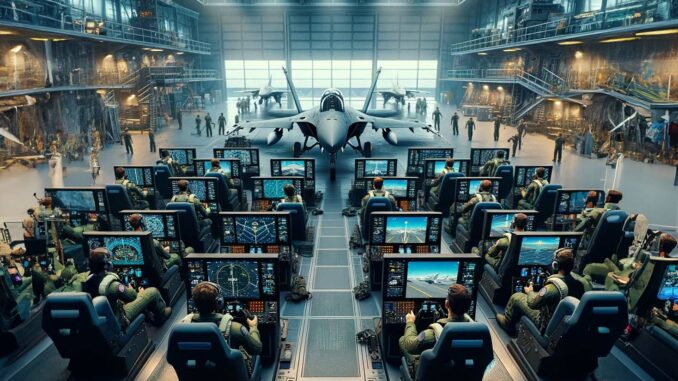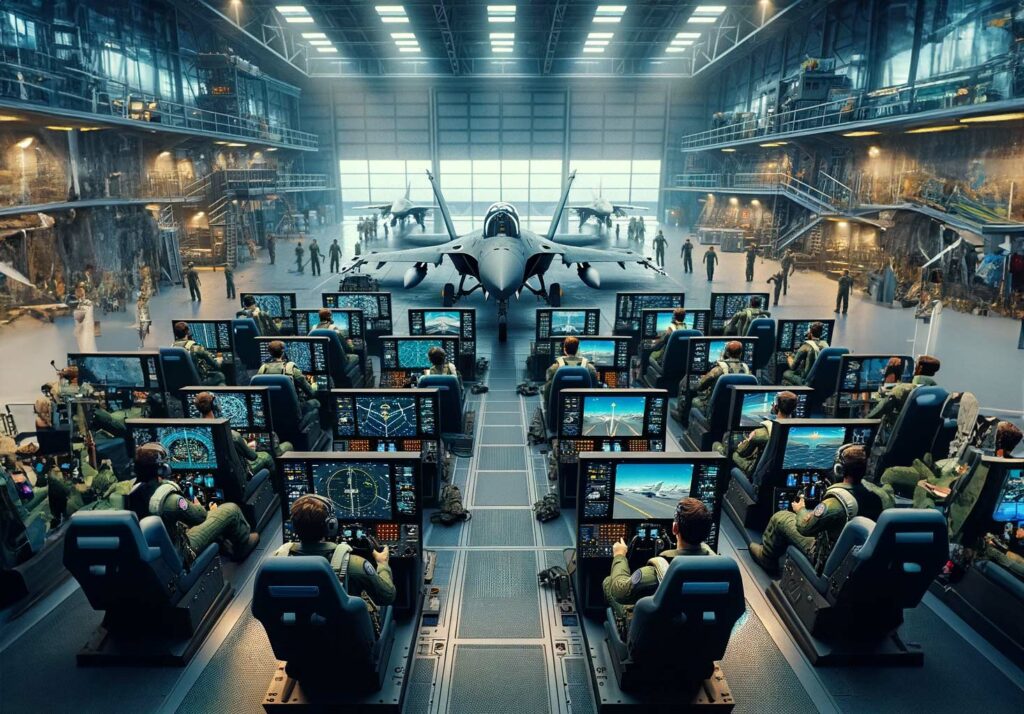
The Pentagon plans to integrate thousands of AI-piloted jets into the USAF for support missions, marking a significant advance in air combat technology.
The Pentagon recently unveiled its ambition to develop a substantial fleet of fighter jets piloted by artificial intelligence (AI), designed to support human pilots. This project is part of the $6 billion Collaborative Combat Aircraft (CCA) program, which aims to integrate at least 1,000 new drones into the United States Air Force (USAF).
A revolution in military aeronautics
The integration of AI-piloted aircraft represents a revolution in military air strategy. These drones, designed to fly alongside human pilots, will be tasked with providing support, escort, fire support and reconnaissance capabilities. Their ability to execute high-risk maneuvers and carry out attacks against ground and air targets redefines the parameters of military air engagement.
Technical and operational criteria
The proposed aircraft must be able to fly autonomously at least 30 feet off the ground (about 9.1 meters) and reach ground speeds of 600 mph (966 km/h). They will be tasked with high-responsibility missions, including protecting manned aircraft, transporting weapons, and carrying out reconnaissance missions.

Selection and production
The Pentagon plans to select two companies by the summer to produce these aircraft, with the aim of producing hundreds over the next five years. The unit cost of each aircraft is estimated at between $10 and $20 million, a significantly lower investment than for traditional fighter jets such as the F-35 or B-21.
Strategic advantages of AI drones
AI-piloted drones offer distinct advantages over conventional fighter aircraft, not least their ability to be deployed on missions where the use of a manned aircraft would be considered too risky or costly. Their design allows use over one or two missions, after which they can be retired or destroyed, making them “expendable” assets aligned with the Pentagon’s vision for “attritable” drones.
Industrial participation and innovation
Industry giants such as Boeing, Lockheed Martin, Northrop Grumman, General Atomics and Anduril Industries have expressed interest in developing these drones. Boeing has already presented its MQ-28 “Ghost Bat”, an unmanned AI-powered force-multiplying aircraft designed to complement and extend existing aerial missions.
Challenges and prospects
This ambitious project raises significant challenges, not least in terms of integrating these systems into existing air operations and their acceptance by human pilots. However, it represents a major step forward in military innovation, offering affordable, expendable units that could transform the pace of military innovation.
The Pentagon’s initiative to develop thousands of AI-piloted jets for the USAF marks a turning point in air defense strategy, promising a profound transformation in combat capabilities and a revolution in the way air missions are conducted. This move towards greater autonomy of air weapons systems underlines the future direction of modern warfare, where AI technology will play a prominent role.
War Wings Daily is an independant magazine.